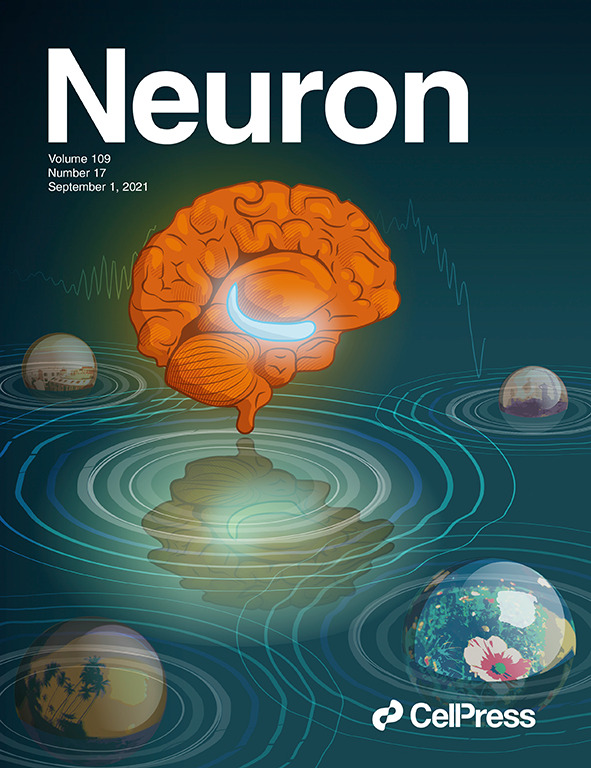重度抑郁症相关的ZBTB7A在眶额叶皮层的失调促进星形胶质细胞介导的应激易感性
IF 15
1区 医学
Q1 NEUROSCIENCES
引用次数: 0
摘要
眶额皮质(OFC)是大脑中负责动机、情感和奖励相关决策的区域,其活动增强是重度抑郁症(MDD)的一个关键临床特征。然而,这种功能障碍背后的细胞和分子底物尚不清楚。在这里,我们对人类OFC进行了细胞类型特异性分析,并意外地将mdd相关的表观基因组特征(包括遗传风险变异)映射到非神经元细胞,揭示了该区域显著的神经胶质失调。mdd特异性染色质位点的表征进一步确定了zbtb7 -星形细胞反应性的转录调节因子-作为mdd相关改变的重要介质。在啮齿类动物模型中,我们发现Zbtb7a在星形胶质细胞中的诱导是驱动应激介导的行为缺陷、细胞类型特异性转录/表观基因组特征和雄性小鼠OFC星形胶质细胞-神经元通信异常的必要和充分条件。因此,这些发现强调了星形胶质细胞在OFC介导的应激易感性中的重要作用,并确定ZBTB7A是mdd相关OFC功能障碍的关键和治疗相关调节因子。本文章由计算机程序翻译,如有差异,请以英文原文为准。
Major-depressive-disorder-associated dysregulation of ZBTB7A in orbitofrontal cortex promotes astrocyte-mediated stress susceptibility
Heightened activity in the orbitofrontal cortex (OFC), a brain region that contributes to motivation, emotion, and reward-related decision-making, is a key clinical feature of major depressive disorder (MDD). However, the cellular and molecular substrates underlying this dysfunction remain unclear. Here, we performed cell-type-specific profiling of human OFC and unexpectedly mapped MDD-linked epigenomic features (including genetic risk variants) to non-neuronal cells, revealing significant glial dysregulation in this region. Characterization of MDD-specific chromatin loci further identified ZBTB7A—a transcriptional regulator of astrocyte reactivity—as an important mediator of MDD-related alterations. In rodent models, we found that Zbtb7a induction in astrocytes is both necessary and sufficient to drive stress-mediated behavioral deficits, cell-type-specific transcriptional/epigenomic signatures, and aberrant OFC astrocyte-neuronal communication in male mice—an established MDD risk factor. These findings thus highlight essential roles for astrocytes in OFC-mediated stress susceptibility and identify ZBTB7A as a critical and therapeutically relevant regulator of MDD-related OFC dysfunction.
求助全文
通过发布文献求助,成功后即可免费获取论文全文。
去求助
来源期刊

Neuron
医学-神经科学
CiteScore
24.50
自引率
3.10%
发文量
382
审稿时长
1 months
期刊介绍:
Established as a highly influential journal in neuroscience, Neuron is widely relied upon in the field. The editors adopt interdisciplinary strategies, integrating biophysical, cellular, developmental, and molecular approaches alongside a systems approach to sensory, motor, and higher-order cognitive functions. Serving as a premier intellectual forum, Neuron holds a prominent position in the entire neuroscience community.
 求助内容:
求助内容: 应助结果提醒方式:
应助结果提醒方式:


